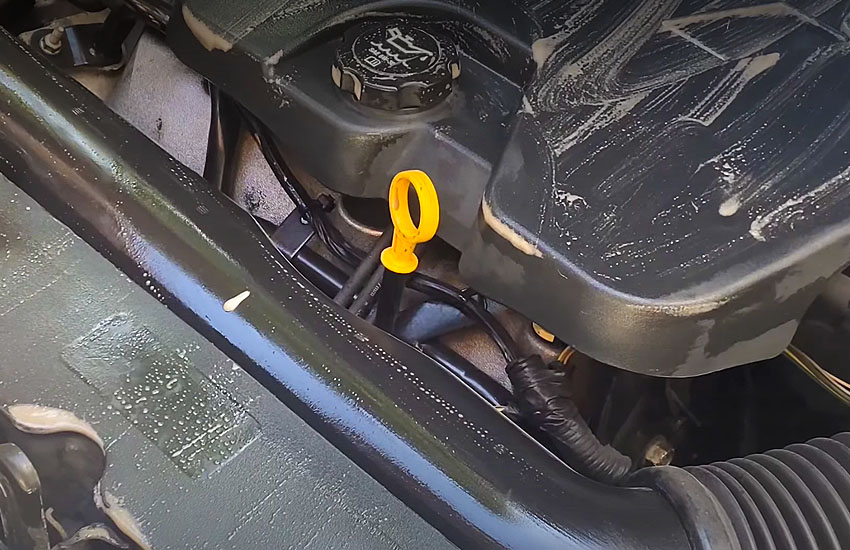If you’ve ever wondered how to wash your car engine at the carwash without causing any damage, you’re not alone. It’s one of those tasks that can seem intimidating, but with the right approach, it can be simple and safe. In this article, I’ll guide you through the whole process of washing your car engine at the carwash, step by step, so that it looks spotless and runs smoothly. Ready to dive in?

Why Washing Your Car Engine Is Important
The Benefits of a Clean Engine
When it comes to your car, the engine is the heart of the operation. A clean engine can help keep it running efficiently, and there are several benefits to washing your car engine regularly.
A clean engine is less likely to overheat because dirt, grease, and oil buildup can block cooling systems and reduce airflow. If you let grime build up over time, it can cause the engine to run hotter than usual, leading to a decrease in performance and even mechanical problems down the line.
Besides that, a clean engine just looks better. If you’re planning to sell or trade your car, a spotless engine bay can make a big difference in the overall appearance of your vehicle. It shows you care about your car, which can increase its resale value.
Prevention of Damage
Over time, dust, dirt, and grease can accumulate under your car’s hood. This buildup doesn’t just make your engine look bad; it can also cause mechanical issues. Dust and dirt can affect rubber hoses and wiring. This can lead to cracks and wear that may not be easily noticeable. Keeping the engine clean helps you spot potential problems early, before they become serious and expensive to repair.
How Often Should You Wash Your Engine?
While you don’t need to wash your engine every time you clean your car, it’s good practice to do it every few months or after a long road trip. If your car is exposed to a lot of dirt, mud, or salt (like in snowy or coastal areas), you may need to clean the engine more often. A general rule of thumb is to clean the engine when it starts looking dirty or if you’ve recently had it serviced.
How to Wash a Car Engine at the Carwash: Step-by-Step Guide
Step 1: Safety First
Before you even think about turning on the hose or heading to the carwash, you need to take a few important safety precautions. You don’t want to risk damaging your car, especially the electrical components of the engine. Start by making sure the engine is cool. Washing a hot engine can cause damage, as the sudden change in temperature can crack engine parts. Allow the car to cool down for at least 30 minutes before starting the cleaning process.
Next, you should disconnect the car’s battery. This step is essential to prevent water from damaging the electrical system or short-circuiting any components. It’s better to be safe than sorry when it comes to your car’s electronics.
Finally, make sure all the openings in the engine bay are covered. This includes the air intake, electrical connections, and the battery terminals. You can use plastic bags and rubber bands to seal off these parts. This will prevent water from getting into places it shouldn’t.
Step 2: Gather the Right Materials
You don’t need many tools to clean your engine, but you should have the right materials on hand to make the job easier. Here’s what you’ll need:
- Plastic bags (to cover electrical components)
- A degreaser or engine cleaner
- A soft-bristled brush or sponge
- Microfiber towels for drying
- A hose with a gentle spray nozzle
- A plastic tarp (optional, to protect the surrounding areas)
Once you have all your materials ready, you can move on to the actual washing process
Step 3: Pre-Wash the Engine
At the carwash, start by using a gentle water spray to wet the engine. Be sure to use a low-pressure setting, as high pressure can force water into places where it doesn’t belong, like electrical components. The goal here is to loosen any dirt and debris without getting the engine too wet.
As you spray, avoid aiming directly at sensitive components such as the alternator or fuse box. These parts should be kept dry to avoid electrical issues later. Instead, focus on the areas where grease and grime have built up, such as around the belts, hoses, and oil pan.
Step 4: Apply Degreaser or Engine Cleaner
Once the engine is damp, it’s time to apply a degreaser or engine cleaner. Spray the degreaser generously over the engine, paying close attention to the dirty spots. Most engine cleaners are designed to break down grease and dirt, making it easier to wash them away.
Allow the cleaner to sit for a few minutes, but don’t let it dry out. This will give the product time to work, breaking down grease and grime before you rinse it off. If you see stubborn dirt, use a soft-bristled brush to scrub it away gently. Be careful not to scrub too hard, as you don’t want to damage any sensitive parts.
Step 5: Rinse the Engine
After the degreaser has had a chance to sit, it’s time to rinse the engine. Use a low-pressure hose to gently wash off the degreaser and dirt. Again, avoid spraying directly at sensitive areas. Focus on rinsing off the cleaner and dirt from the engine’s surfaces.
If any spots are still dirty, you can reapply a little degreaser and scrub again. Be patient and thorough with the rinsing to ensure all the soap and debris are washed away.
Step 6: Drying the Engine
Once the engine is clean, it’s time to dry it off. You can use a microfiber towel or rag to gently wipe down the engine. This will help remove any remaining moisture and prevent water spots from forming. Be sure to get into all the small crevices where water can hide, like around the hoses and wiring.
If you have access to compressed air, you can use it to blow off excess water. This will help dry areas like the engine block and between components. It’s a great way to make sure everything dries quickly and without leaving water spots.
Step 7: Reconnect the Battery and Check for Problems
After the engine is completely dry, you can reconnect the battery. Double-check all electrical connections to make sure they’re dry and secure. If you see any signs of water damage, it’s important to address it before starting the engine. Inspect the engine for any potential issues that might have been hidden by dirt and grease.
This is also a good time to check your engine’s oil and fluid levels. A clean engine gives you a clear view of everything, making it easier to spot leaks or issues that need attention.
I hope this article helped you understand how to wash your car engine at the carwash safely and effectively. With the right preparation and care, washing your engine can be an easy and beneficial part of car maintenance. Just follow the steps, take your time, and soon you’ll have a clean, well-maintained engine that will help your car run smoothly!
Frequently Asked Questions
Is it safe to wash my car engine at the carwash?
Yes, it’s safe to wash your car engine at the carwash as long as you take the right precautions. Make sure the engine is cool, cover sensitive areas like the battery, and use low pressure to prevent water damage. Always use a degreaser and ensure everything is dry before reconnecting the battery.
Can I wash my car engine without disconnecting the battery?
It’s highly recommended to disconnect the battery before washing your car engine. This prevents water from damaging the electrical system. Taking the extra step ensures you avoid any short-circuiting and keeps your car’s electronics safe.
Do I need a special cleaner for my car engine?
You should use a degreaser or engine cleaner specifically designed for car engines. These cleaners are formulated to break down grease, dirt, and oil without damaging the engine. Avoid using household cleaners, as they might be too harsh and could harm your car.
Is it possible to damage my engine by washing it?
If you’re careful and follow the right steps, washing your engine shouldn’t cause any damage. The key is to use low-pressure water, avoid sensitive areas, and dry everything properly. Be cautious, and you won’t run into any problems.
Can I use high-pressure water to clean my car engine?
No, it’s best to avoid using high-pressure water when washing your car engine. High-pressure water can force its way into electrical parts and other sensitive components, causing damage. Always use low pressure to be safe.
Do I need to wash my engine every time I clean my car?
No, you don’t need to wash your engine every time you clean your car. Cleaning the engine every few months or after long trips is enough. You should also clean it when you notice dirt buildup or after servicing.
Is it necessary to dry the engine after washing?
Yes, drying the engine is essential to prevent water spots and corrosion. After rinsing, use a microfiber towel to wipe off excess water. You can also use compressed air to help dry hard-to-reach areas.
Can I wash my car engine during the winter?
Washing your engine during the winter is possible, but be cautious. If the temperatures are too low, water could freeze in certain parts of the engine. It’s best to wash your engine on a warmer day to prevent freezing and ensure everything dries properly.


